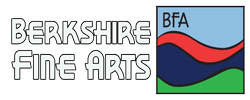LA Company Bodytraffic at Jacob's Pillow
Fourth Visit Since 2013
By: Charles Giuliano - Jul 07, 2025
Bodytraffic
Jacob’s Pillow
Ted Shawn Theatre McCain Stage
July 2-6. 2025
Founding artistic director Tina Finkelman Berkett
The Company: Chandler Davidson, Katie Garcia, Pedro Garcia, Anaya Gonzalez, Brenan Gonzalez, Alana Jones, Joan Rodriguez, Jordyn Santiago
Program, This Reminds Me of You
Flyland (2018)
Choreography, Lighting, Animations, Visual Design: David Middendorp
Music, Genevieve Murphy and Cinematic Orchestra
Costumes, Ben Voorhaar
Blue Until June (2000)
Choreography, Trey McInytyre
Music, Etta James
Lighting, Clifton Taylor
Costume and Set Design, Sandra Woodall
I Forgot the Start (2024)
Choreography, Matthew Neenan
Music, Sinead O’Connor, Heather Christian and The Astronauts, Ozzie Katani and Daniel Ho, Broken Social Scene, and Sufjan Stevens
Lighting and Video Design, Christopher Ash
Costumes, Márion Talán de la Rosa
Costume Construction, Victoria Bek
Incense Burning on Saturday Morning: The Maestro (2024)
Choreography, Joel D. Lane
Original Musia Composition, Munir Zakee
Lighting, Michael Jarett
Video Design, Yee Eun Nam
Costumes, Jarrod Barnes
Costume Construction, Victoria Bek
Bodytraffic was founded in 2007 in Los Angeles by Tina Finkelman Berkett and Lilian Barbeito who later left the company. They made their Jacob’s Pillow debut on the outdoor stage in 2013. They returned two more times including appearing in the Doris Duke theatre which officially reopened after renewal this week.
Introducing the company artistic director, Pamela Tatge, told the audience that it was time to invite them to the main stage of the Ted Shawn Theatre. They are known for working with established choreographers and they brought four such works to Pillow. This reliance of a range of choreographers equates to the company not having a definable identity. A signifier, however, is the strength of the dancers who perform modern works through the lens of classical training. The program we experienced was eclectic with a unifier being the superb and precise execution of unfaltering dancers. They fluidly extracted the best of every piece.
In an era of AI, the technical aspects of the first work Flyland, choreographed by David Middendorp, were truly astonishing. There was the jaw dropping wonderment of how did they do that?
Initially, we see a couple dancing in front of what appears to be a domestic library with book shelves and a hearth. In a flash they are merged into the projected interior. Improbably, he climbs a ladder, reaches for a book and appears to be suspended in air.
For the duration of the piece they lay on the floor while their fluid movements are projected on the back wall. Freed from verticality and gravity they are able to float and move like weightless Astronauts. They are projected into sky and clouds with simulation of the flight of birds. The fascinating piece, and glimpse of the future of dance, ended all too soon.
Tatge told us that’s just what to expect in the newly designed Doris Duke Theatre which encourages state of the art technology.
We were brought back to earth by the more conventional but galvanic Blue Until June choreographed by Trey McInytyre. He is no stranger to Pillow and we attended the final tour of his company several years ago. At the time, he went freelance but now, will be associated with Bodytraffic. That may, with time, give the eclectic company more of a core identity.
A suite of dances is set to music by multiple Grammy winner, Etta James (1938 – 2012). Like Billie Holiday who inspired her James struggled with addiction. That suffering authenticates often heart wrenching lyrics of love and loss.
There are a number of songs and each is reflected by aspects of courtship. In the swing style of ballroom dancing there is partnering, solos, as well as ensemble moments. The women are attired in the simple dresses of the 1950s and the couples reflect the social dancing of Los Angeles. Drama is an element of the scheme with jealousy adding machismo to the mix. It ended with her iconic “At Last.”
Asked what he thought of the dance my friend responded “What’s not to like about Etta James.”
There was less focus and clarity to I Forgot the Start choreographed by Matthew Neenan. Compared to the cohesion of Etta James, the work comprised music by five individual musicians and groups. There was a shift with each segment which was difficult to absorb.
The piece is named for a line in “Flint” by Sufjan Stevens.
It’s the same outside,
Driving to the riverside.
I pretend to cry,
Even if I cried alone.
I forgot the start.
Use my hands to use my heart.
Even if I die alone.
The dance, set to “In This Heart” by Sinead O’Connor, commenced with eight dancers in a line advancing toward us. They are attired in translucent, white, unisex pants and tops by Márion Talán de la Rosa. The line splits off into other configurations as we hear “Machu Pichu.”
There was more absorbing technical wizardry in the final piece Incense Burning On a Saturday Morning: The Maestro by Juel D. Lane.
It was inspired by the work of African American artist, Ernie Barnes (1938-2009) a resident of LA and former NFL player. I went on line to view works by the artist noted for stretching and exaggerating figures including jazz musicians and dancers in night clubs.
The tall and striking Chandler Davidson was the Maestro of this engaging and galvanic work. An unseen hand creates broad brush strokes in the manner of abstract expressionism. That was not the artist’s style but functioned as a signifier for artistic process. Later we caught glimpses actual works but there was no intent to create a slide show of his work. The piece stands as a tribute, in dance, of an artist who depicted and expressed the community and culture that he was a part of.
The engaging work demonstrated the powerful manner in which Bodytraffic personifies the unique character, creativity and diversity of Los Angeles.
